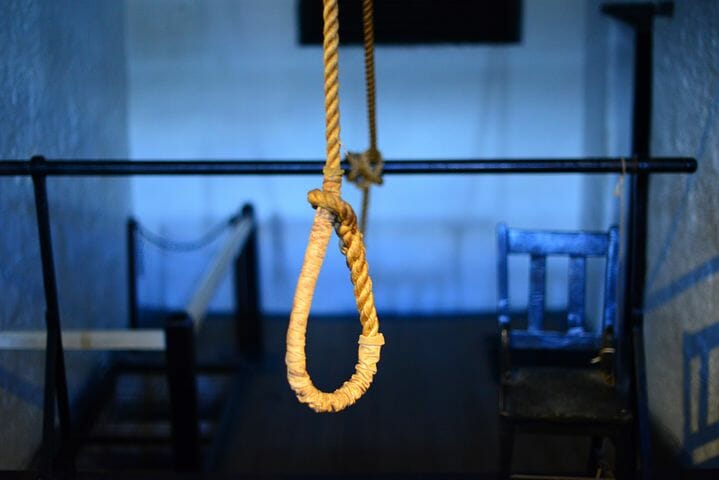The controversial and graphically bloody depiction of suicide in Netflix’s popular series, “13 Reasons Why,” has sparked a firestorm of controversy among mental health experts and suicide survivors about its depiction of suicide and mental health.
Some, including one of the most recognizable suicide survivors in America, Kevin Hines, laud the series for starting the much-needed conversation about teen suicide. Others, including Dr. Scott Poland, a licensed psychologist and professor at the Center for Psychological Studies at Nova Southeastern University in Florida, argue that the series and televised discussions after each show are “off the mark” and “diminish Netflix’s efforts to start the conversation about suicide.
In the first season, a 17-year-old, fully clothed girl, eases into a bathtub and proceeds to graphically slit her wrists with a razor blade in a 3-minute sequence. Blood-filled water overflows onto the bathroom floor.
Now, a study in the Journal of American Medicine indicates that specific scene may have led to a spike in suicides. It found that within three weeks of the series premiere on March 31, there was a significant rise in Internet searches involving suicide, by about 19 percent.Coincidentally, in that same three weeks, it also set a record for being the most tweeted about TV series in 2017 — to date.
Certainly when a movie or TV show is released that portrays suicide there are concerns that people will identify with the fictional character and copy the suicidal intent, said Steve Steinberg, director of Behavioral Health for the Riverside University Health System.

Photo Courtesy of Kevin Hines
The popularity of this show with teens presents an opportunity to have discussions with the youth in our community about their personal experiences with depression and suicidal thoughts. Even if they do not have personal experiences, they may have a friend who has expressed these experiences, Steinberg said.
“An open, direct and honest discussion with teens of the signs of depression and suicide risk with teens is always beneficial and can be done by parents, teachers, counselors or teens among themselves,” Steinberg said. “Adults must make themselves available to hear that a teen or a teen’s friend is depressed and thinking of suicide, and teens must be willing to share this information.”
A great resource for everyone, Steinberg said, is www.suicideispreventable.org. Knowing the warning signs and taking action for yourself or someone you know are the best preventative measures available.
Teen suicide ranks as the second leading cause of death among youth ages 10 to 24, according to the Centers for Disease Control and Prevention.
Hines, 35, survived a suicide attempt after jumping 220 feet from the Golden Gate Bridge into the bay below in September 2000. Since it was built in 1937, more than 1,700 people have jumped off the Golden Gate Bridge in San Francisco, Calif., and only 25 are known to have survived, according to The Centre for Suicide Prevention in Calgary, Canada.
He said it is time to stop “hating” on Netflix and said in a telephone interview from his Atlanta, Ga., home that the series has opened a new “global conversation” about suicide.
“I am not torn on this issue,” he said.
He is petitioning Netflix to consider placing the National Suicide Prevention Lifeline number, 1-800-273-8255 at the end of every season. That, he said, would be ideal. The Lifeline provides 24/7, free and confidential support for people in distress.
Matt Kuntz, director of NAMI Montana, said the show, while perhaps well-intentioned, doesn’t address the underlying issues of mental illness and depression and portrayed an “incomplete picture” of what suicide really is.
“The series is dangerous,” Kuntz said. “I’m worried about the glamorization of suicide without any real discussion of why this happens in the real world.”
Dr. Carl C. Bell, staff psychiatrist at Jackson Park Hospital Family Medicine Clinic in Chicago, saw the show and said he is “ambivalent.”
“The thing that sticks in my craw is that for 45 years most people cut their wrists perpendicular to their forearm not parallel and their ignorance has saved many lives,” Bell said. “This show illustrates exactly how to do it and I am very uncomfortable that they provided a really good how-to example.”
On the positive side, Bell said he thinks it is a “great show” that should provide teens with an example of how to speak up. He also said the psychiatry and psychology were well done.
“The graphic suicide scene is just way over the top,” Dr. Poland said. “I had to make myself watch it. The message is all wrong. It’s just very, very inappropriate and a disservice to school counselors.”
The one thing they got right is the torture, along with the pain and suffering that those left behind experience, Poland said. Each suicide intimately affects at least six other people.
The show is clever, of high quality and certainly has attracted an audience, but it’s not about helping teens or shining a light on mental illness, Poland said.
“It’s all about money,” he said sarcastically.




![Sacred Mission Led to Creation of Museum [Opinion]](https://ukenreport.com/wp-content/uploads/2024/04/PALEO-Overall-02_preview.jpeg-Copy-440x264.jpg)


